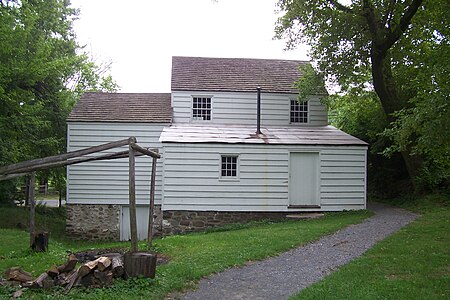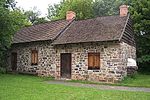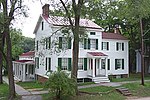Boehm House
Historic Richmond TownHouses completed in 1750Houses in Staten IslandNew York City Designated Landmarks in Staten IslandRelocated buildings and structures in New York City ... and 2 more
Richmondtown, Staten IslandStaten Island building and structure stubs

The Boehm House is an historic house at 75 Arthur Kill Road in the Richmondtown section of the borough of Staten Island in New York City. This 1750 house, relocated from Greenridge as a part of Historic Richmondtown, was typical of rural New York during the American Revolution. Also on view in the house: an exhibit of early building techniques and restorations. It was designated a New York City landmark in 1969 as the "Boehm-Frost House".
Excerpt from the Wikipedia article Boehm House (License: CC BY-SA 3.0, Authors, Images).Boehm House
Arthur Kill Road, New York Staten Island
Geographical coordinates (GPS) Address Nearby Places Show on map
Geographical coordinates (GPS)
| Latitude | Longitude |
|---|---|
| N 40.571694444444 ° | E -74.147305555556 ° |
Address
Boehm House
Arthur Kill Road
10308 New York, Staten Island
New York, United States
Open on Google Maps








